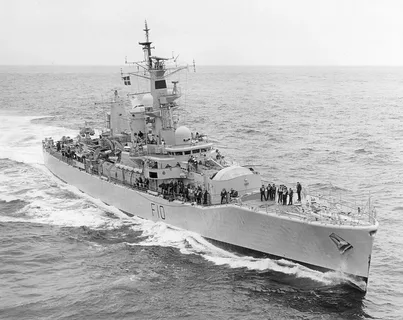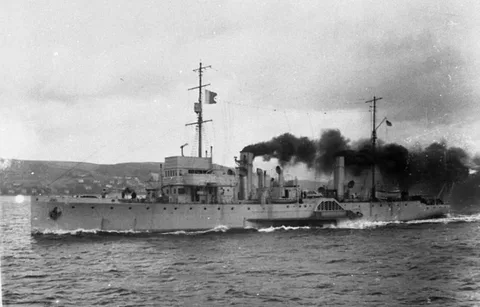Exploring HMS Mentor: A Key Player in hawthorn m class hms mentor Destroyers
The Unsung Hero of Naval Warfare HMS Mentor’s Role in hawthorn m class hms mentor Destroyers
When we don’t forget the historic naval war, the highlight regularly shines on grand battleships and plane carriers. But behind the curtain, a key player has become ensuring the ones giants want to perform their obligations successfully—the destroyer. Among these, the HMS Mentor is vital in Hawthorn’s M-Class destroyers. This position will take you on a deep dive into the statistics, layout, function, and enduring legacy of HMS Mentor, losing sight of why this vessel stays an icon in naval conflict.
Table of Contents
Introduction
Destroyers have continuously achieved a critical function in naval war, specifically inside the path of the early 20th century. The Hawthorn M-Class destroyers have been no exception, presenting every safety and offensive capability to large fleet gadgets. Among the ones, HMS Mentor emerged as a standout, making outstanding contributions to naval techniques and the era later of World War I. This manual will find out the multifaceted factors of HMS Mentor, highlighting its historical significance and impact on future naval designs.
History and Background of the Hawthorn M-Class Destroyers
The M-Class destroyers originated from a pressing desire to build quicker, longer-lasting ships capable of playing several roles in naval struggle. Introduced during World War I, these vessels were often built to counter the threat posed by enemy submarines and torpedo boats.
The M-Class destroyers, which embody HMS Mentor, played critical roles in several naval engagements throughout the war. Their tempo and maneuverability made them effective in each offensive and protective operation, offering essential help to larger ships and safeguarding convoys in competition with enemy assaults.

One crucial issue feature that sets these ships apart from previous education is their advanced propulsion structures. Equipped with steam mills, the M-Class destroyers must gather at higher speeds, making them formidable warring parties in naval skirmishes.
Design and Specifications of HMS Mentor
HMS Mentor boasted unexpected layout specifications, making it a standout for the M-Class fleet. It measured approximately 273 ft in duration and displaced a spherical 1,050 masses. The ship’s tempo was modified into one in each of its maximum great features, capable of accomplishing as many as 34 knots, according to its powerful steam generators.
Regarding armament, HMS Mentor has three 4-inch guns, two 2-pounder pom-poms, and four 21-inch torpedo tubes. This arsenal makes it a flexible combatant, able to attract both floor and underwater threats effectively.
HMS Mentor incorporated several technological enhancements compared to special ships inside the M-Class fleet. These blanketed superior fireside management systems and more fantastic maneuverability, making it a more inexperienced and lethal vessel in fight scenarios.

HMS Mentor’s Role in World War I
HMS Mentor performed several pivotal roles during World War I, participating in several major missions and battles. One of its splendid engagements was the Battle of Jutland in 1916, during which it provided useful assistance to large British battleships and helped fend off German naval forces.
The strategic importance of HMS Mentor must be balanced. Its pace and firepower allowed it to effectively engage in several naval engagements, disrupting enemy formations and protecting essential delivery routes.
The typical performance of HMS Mentor in those battles had a long-lasting impact on naval operations. Its fulfillment showed the effectiveness of the M-Class design and triggered the following destroyer techniques and techniques.
Key Contributions to Naval Warfare
HMS Mentor made several vital contributions to the evolution of naval conflict. It played a massive role in shaping destroyer strategies, demonstrating the importance of tempo and agility in naval engagements.
The delivery additionally stimulated the evolution of M-Class destroyers and new designs. Lessons learned from HMS Mentor’s average overall performance were incorporated into more recent destroyer designs, which were crucial to more advanced and capable vessels.
HMS Mentor paved the way for contemporary-day naval destroyers, placing a present-day for future designs. Its modern skills and fulfillment operational file highlighted the importance of non-stop technological improvements in maritime warfare.

Hawthorn Leslie and the Shipbuilding Legacy
Hawthorn Leslie & Co., the shipbuilders behind the M-Class destroyers, played a massive role in their improvement and success. Located in the Tyneside region of England, the enterprise corporation had a wealth of shipbuilding and engineering expertise.
The significance of shipbuilding inside the area prolonged past the manufacturing of warships. It contributed to the community’s financial gadget and provided employment opportunities for the community. The construction of HMS Mentor and different M-Class destroyers showcased the know-how and resolution of Hawthorn Leslie’s personnel.
HMS Mentor displays the records and craftsmanship of Hawthorn shipbuilding. Its layout and overall performance were testaments to the shipyard’s functionality to supply first-rate naval vessels that met the annoying necessities of wartime operations.

The Legacy of HMS Mentor
The legacy of HMS Mentor extends beyond its contributions at some stage in World War I. Its effect on naval conflict and destroyer layout has left a protracted-lasting impact on subsequent generations of maritime architects and strategists.
Preservation efforts and the historic popularity of HMS Mentor spotlight its significance in naval statistics. Memorials and museums devoted to World War I naval data frequently function famous for the M-Class destroyers and their contributions to the struggle effort.
HMS Mentor remains a symbol of naval innovation and excellence. Its legacy reminds us of the importance of technological development and strategic thinking in maintaining naval superiority.
Conclusion
HMS Mentor’s contributions to naval statistics are straightforward. From its first-rate layout and specifications to its pivotal characteristic in World War I and its lasting impact on destroyer strategies, HMS Mentor stands as a testimony to the ingenuity and effectiveness of the M-Class destroyers.
The delivery’s enduring legacy inside the Hawthorn M-Class collection underscores the significance of non-stop innovation and model in naval warfare. For information lovers, naval generation lovers, and military historians, HMS Mentor gives a fascinating glimpse into the evolution of naval destroyers and their crucial features in shaping modern-day maritime techniques.
FAQs
What made the M-Class destroyers particular?
The M-Class destroyers were precise because of their advanced propulsion systems, better speeds, and stepped-forward hearth management structures. These capabilities set them apart from preceding instructions and made them bold warring parties in naval engagements.
What battles did HMS Mentor take part in?
HMS Mentor participated in several massive battles at some unspecified time in the future of World War I, together with the Battle of Jutland. Its engagement feature tested its effectiveness and strategic significance in naval operations.
How did HMS Mentor impact future destroyer designs?
HMS Mentor’s universal performance and technological upgrades stimulated subsequent destroyer designs. Lessons learned from its operational report were protected into more sophisticated models, leading to more advanced and successful vessels.
Is HMS Mentor, however, preserved in recent times?
While HMS Mentor isn’t preserved, its legacy is commemorated through memorials and museums dedicated to World War I naval facts. These efforts highlight the importance of the M-Class destroyers and their contributions to the war attempt.
By exploring the information and effect of HMS Mentor, we gain deeper details of the vital function destroyers played in naval battles and the continued legacy of innovation and excellence they preserve to inspire.
How had M-Class destroyers top-notch from amazing destroyers of their time?
M-Class destroyers had been superb with the aid of way in their advanced velocity and agility in evaluating different destroyers in their technology. Equipped with superior propulsion structures and firepower, they excelled in short maneuvers and tactical flexibility, which have been vital at some point in immoderate-stakes naval engagements.
What technological improvements did HMS Mentor feature?
HMS Mentor incorporated diverse technological innovations that were ahead of its time, including advanced weaponry structures, stepped-forward hull designs for improved speed, and higher navigation generation. These improvements contributed to its achievement in several wartime operations and immediately recommended future naval supply designs.
What modified the strategic significance of destroyers like HMS Mentor throughout World War I?
Destroyers like HMS Mentor had been pivotal in preserving management over crucial sea routes and protecting massive battleships from enemy threats. Their agile nature allowed them to perform rapid attacks, disrupt enemy formations, and provide critical surveys, which became crucial for strategic planning and operation success.
How are M-Class destroyers venerated nowadays?
M-Class destroyers, along with HMS Mentor, are venerated in numerous ways, including well-known shows in naval museums, historical documentaries, and educational publications. These commemorations raise awareness of their strategic importance during World War I and their lasting effect on maritime engineering and the struggle approach.
Did HMS Mentor have any excellent commanders or organization members?
HMS Mentor’s operations were supported by expert commanders and teams who precisely completed complicated wartime strategies. While specific great people may not be considerably recognized these days, the collective achievements of its crew continue to be commemorated in naval histories that do not forget their bravery and know-how.




Write a Comment